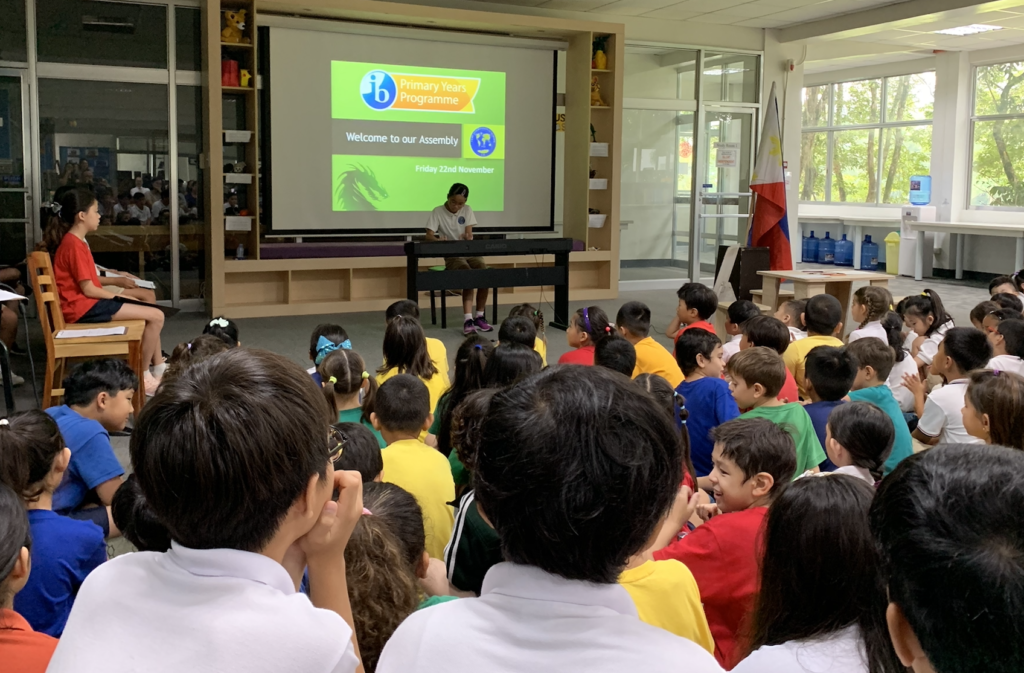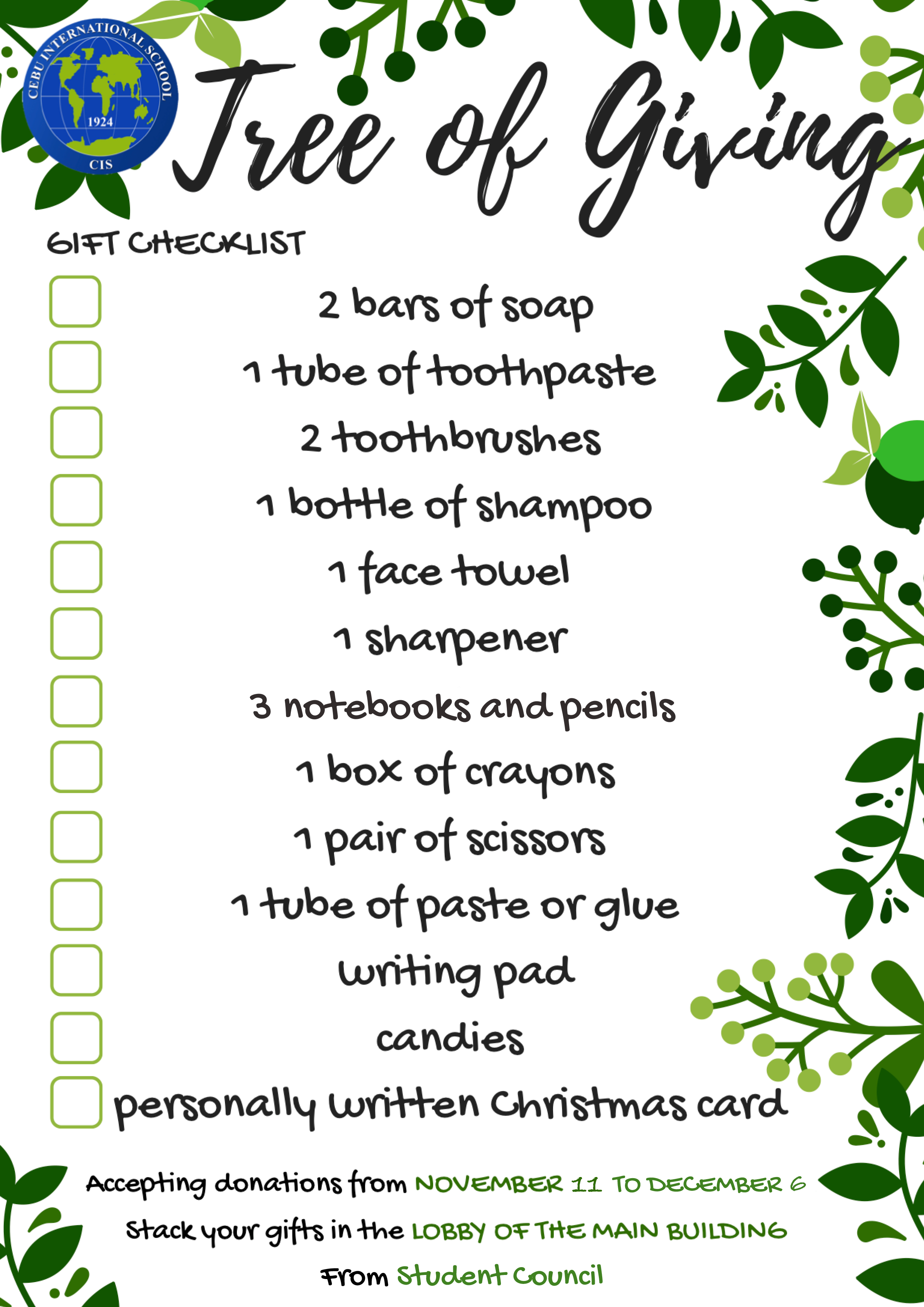
Elementary News
by Mr. Glenn Davies
Dear Elementary Community,
Today was another wonderful elementary assembly. I was so proud to be part of such a wonderful event that had been designed and led completely by our CIS elementary students. We believe that our students are capable, competent and smart, and when we give them the opportunity to display these attributes, they indeed achieve amazing things. As parents, we often feel we should protect our children from the mistakes that they may make and from the natural consequences of these mistakes, however the best gift we can give children is to equip them to tackling hard challenges, let them fail, support them through their mistakes, and provide them with the safe environment that will enable them to try again. In the PYP, we explore the difference between self-confidence and self-efficacy. Self-confidence rests upon concurrence with the skills, knowledge, and attitudes we have. Self-efficacy is the knowledge that one may not be able to do something yet, but with new learning, hard work and perseverance, we will be able to achieve this thing in the future. Self-efficacy is the mindset of a 21st Century Learner, and self-efficacy is what I saw in students today during assembly.

As you will be aware from the previous communication, the CIS Lap-A-Thon fundraiser will be taking place on Wednesday 11th December. The Elementary Student council made a video to share with the community about the Lap-A-Thon. All proceeds from the fundraising will go to supporting our Week Without Walls service projects.
Student Article
 A few weeks ago, we had a soccer tournament called the Aboitiz Cup. We had two games to play and we needed to win at least one and tie one to advance to the quarterfinals. We played better than ever and won both of our games! Our first game we won 6-1 vs USJR Jaguars. Our second game was a day later. We won 2-0 vs USC. We advanced to the quarterfinals! Now we nervously await the quarterfinals schedule. – Isaiah, G4
A few weeks ago, we had a soccer tournament called the Aboitiz Cup. We had two games to play and we needed to win at least one and tie one to advance to the quarterfinals. We played better than ever and won both of our games! Our first game we won 6-1 vs USJR Jaguars. Our second game was a day later. We won 2-0 vs USC. We advanced to the quarterfinals! Now we nervously await the quarterfinals schedule. – Isaiah, G4
Middle and High School News
by Mr. Dale Wood, Middle and High School Principal
Grade 12 TOK Presentations
As part of both our IBDP and CIS diploma programs, all students complete significant work within the “IB core” (i.e. CAS, Extended Essay, and Theory of Knowledge) which is designed to serve as a bridge between the students’ subjects and help them develop important skills, both academic and practical, which will serve them well in the future.
Over the past few weeks, our students have been working on the culmination of their last three semesters in the TOK course with two final assessments: the TOK Essay, and the TOK Presentation. TOK is a unique course in the IB curriculum as it guides and challenges our students to investigate what they know and how they know it, and it helps them develop critical skills which are relevant for analysis across their other courses.
It has been amazing to listen to our students as they make their presentations this year, which are twenty minutes in length when working in pairs, ten minutes if individual. They have worked so hard to develop a coherent line of thinking, developing knowledge claims, counterclaims, and reach logical conclusions- all backed by relevant and convincing evidence. At the end of the presentation the teachers and students ask questions to help them clarify their points or fill in possible gaps in their argument. The words that come to my mind when I sum up these student performance are knowledgeable, insightful, articulate, and polished. Students are, by nature, curious and often struggle to find their own beliefs, identity, and voice, and TOK actually creates a framework where they can explore and develop these areas.
One of the requirements for the TOK Presentation is that students use real life situations (RLS) to identify knowledge question. Our students are able to tackle everyday events and investigate to explore knowledge questions and the AOK and WOK.
Students are in the process of making these presentations in the Media Center. Their classmates watch politely, as do grade 11 students (who are also in their first year of TOK), who can see these excellent presentations as models for their performances next year.
Here are some student reflections on what they have gained through making the TOK Presentations:
“I chose my RLS because it was certainly provoking and I saw that there was a lot to be explored in terms of what was right and wrong with the situation.” – Axelle
“My partner and I chose an article that discusses men’s voices in the abortion debate. The fact that we could not suddenly jump to a conclusion about this issue made it worth exploring through a TOK presentation.” -Sungju (Clair)
“Creativity helps me in my learning as it helps me look at the subject from a different perspective. This is especially true with TOK where, through the creativity of looking at different issues using different ways of knowing, I am able to examine an issue through a broader perspective.” – Chinatsu
Comment from grade 11 who watched the presentations
“Thinking skills are very important in TOK presentations because they set a clear foundation for the whole presentation. They will allow me to thoroughly analyze the RLS (Real Life Situation) and also the evidence presented. It also helps me in formulating the best possible Knowledge Questions, Claims, and Counterclaims.” -Isabel
Wellness for the whole child in Middle and High School (as well as for their parents)
by Evangeline Villagonzalo, School Counselor and Mr. Dale Wood, Middle and High School Principal
With the pressures of second semester mounting and our end of semester assessments swiftly approaching, our students need to remember to embrace those LP traits that focus on building character rather than stressing over academic perfection- traits like being balanced, open-minded, principled, and caring. These learner profile traits aren’t about making a living, but about making a life. With this in mind, Vangie Villagonzalo and I want to share some thoughts from the book How to Make Disease Disappear by Dr. Rangan Chattergee. Of course, it is not enough just to know these things; our lives will only change when we actually put them into practice. But awareness is the first step toward making a positive change.
According to Dr. Chattergee, for our lives to be free from illness, there are four pillars of health that we need to maintain. These pillars are simple aspects of daily life whose impact and importance is often taken for granted. The four pillars are: RELAX, EAT, MOVE, and SLEEP, and the idea is to create a balance across all of these pillars. In this article we will be sharing some insights on the RELAX pillar and some ways that we might practice it more effectively (the other pillars will be explored in the future).
 Relaxing is first pillar the author points to, which may seem like a strange place to begin in an academically rigorous institution like CIS, but it makes sense if we properly understand what we mean by “relax.” Not effectively relaxing enough can and will likely damage our health, and yet this is also the pillar that most often gets ignored. Given the modern world we are living in today, the health problems of the majority of the patients the author has encountered have been driven entirely by their lifestyles. When a person is under stress, the body’s flight, fight, or freeze survival instincts kick in; our body is always under threat from the “dangers/stressors” of the 21st century lifestyles we try to maintain. When we are under stress our body produces a hormone called cortisol (or stress hormone); because our modern lifestyle is frequently creating pressure, the result is that far too much cortisol is produced. When our cortisol levels rise, so do our heart rates and blood sugar, and at a certain point the body experiences muscle contractions and a loss of appetite. Healthy relaxation can ease this tension so that the body doesn’t reach that “stress” crisis. Some tips for how to practice relaxation are:
Relaxing is first pillar the author points to, which may seem like a strange place to begin in an academically rigorous institution like CIS, but it makes sense if we properly understand what we mean by “relax.” Not effectively relaxing enough can and will likely damage our health, and yet this is also the pillar that most often gets ignored. Given the modern world we are living in today, the health problems of the majority of the patients the author has encountered have been driven entirely by their lifestyles. When a person is under stress, the body’s flight, fight, or freeze survival instincts kick in; our body is always under threat from the “dangers/stressors” of the 21st century lifestyles we try to maintain. When we are under stress our body produces a hormone called cortisol (or stress hormone); because our modern lifestyle is frequently creating pressure, the result is that far too much cortisol is produced. When our cortisol levels rise, so do our heart rates and blood sugar, and at a certain point the body experiences muscle contractions and a loss of appetite. Healthy relaxation can ease this tension so that the body doesn’t reach that “stress” crisis. Some tips for how to practice relaxation are:
- Set aside “me time” every day – every day, set aside at least fifteen minutes; to enjoy some time for you. Start treating relaxation as something you do as a routine, not something you need to do because you are already under stress. You might be asking what will you do when you relax? One way would be to indulge yourself in a peaceful and quiet room listening to your favorite music, or having a cup of tea or coffee, or taking a brief walk outside, reading a magazine or your favorite book, sitting in a park playground, singing, playing your favorite sport, playing a musical instrument, gardening, painting, dancing, cooking your favorite dish while listening to your favorite music, etc. The important thing to remember here is that you have to do these things you like doing alone; this would include any activity that does not involve the use of your smartphones, tablet, or computer. Lastly, you are not allowed to feel guilty about it.
2. Have a screen-free Sabbath (i.e. a tech “fast”) Screen addiction is a great concern nowadays. A 2014 study in the UK regarding the use of smartphones painted a disturbing picture of the average user. The study reveals that an average user checks their phone 221 times a day starting from 7:31 AM; by the time they go to bed, most of them are still on their phones or devices. Reducing the use of smartphones was not even enough to fight against addiction. The author suggested a digital detox to help us work up to our “screen-free Sabbath” meaning setting aside one day a week wherein we refrain from using any social media, emails, or anything that has something to do with internet connectivity and screens.
Suggested Seven day Digital Detox:
Monday – switch off push notifications
Tuesday – unsubscribe from redundant unnecessary email
Wednesday – set email apps to refresh manually
Thursday – Use a “device box” for meal time – meaning devices must go in that box before sitting down for a meal
Friday – consider switching off all your e-devices ninety minutes before bedtime
Saturday – have a 1- hour period during the day where you are device free and enjoy some special moments without posting them on social media
Sunday – live your entire day offline and without screens
3. Keep a gratitude journal. With the influx of negativity around us, be it in the news, social media, and daily pressures, keeping a gratitude journal is a nice way to counterbalance the negativity. The author cited the American psychologist Martin Seligman, who is one of the founders of happiness studies or “positive psychology” and has tested a version of this called “three blessings”. This is just very simple; all you need to do is have a journal and a pen, then list three things you are thankful for each day. According to Seligman, the act of writing it down is crucial. In his well-designed studies, he found that people who do this for a week see rises in their feelings of life satisfaction and a lowering of depression levels. According to Seligman, if you start making this a regular practice, it will result in a less depressed and happier version of yourself.
4. Practice mindfulness or stillness exercises. Our bodies are not actually designed for our noisy and hyper-stimulated world, with all the distractions we are bombarded with. Practicing stillness is a handy exercise that is beneficial for our health because it reduces daily stress. A fantastic way to incorporate stillness into your routine each day is through mindfulness or stillness exercises. The book suggested a simple exercise called 3-4-5 breathing, which means that you breath in for 3 seconds, hold it for 4 seconds, and exhale for 5 seconds. This breathing exercise is very simple and is something you can do in your car when traffic is heavy, in between classes, or during your lunch break. In other words stillness (think of it as the art of practicing being a Human Being rather than a Human Doing)- is possible anytime and anywhere. The author suggested interventions you might think of trying:
-
- Meditation with an app like “calm”
- Deep breathing
- Exercises, like yoga breathing
- Five minutes of coloring
- Sitting in silence with full awareness of your senses
- Listening to music mindfully – closed eyes and fully focused
- Practicing Tai Chi – a moving meditation
5. Reclaim your dining table. Eat one meal per day at the table, in company (if possible) and without your devices. According to Dr. Chaterjee the essence of doing this is not about the furniture but the feeling of “togetherness”. The benefits we reap in sitting together at a communal table helps take us out of the fight-or-flight mode and puts us into relaxation mode. As a result you will be able to digest food properly since you are in a more relaxed mode.
Potential benefits of practicing the Relax pillar include:
- Weight loss
- Improved resilience
- Reduced feelings of stress
- Improved ability to cope
- More balanced outlook
- Less road rage
- Improved ability to sleep
- More restorative sleep
- Better concentration
*Stay tuned as we share with you the other three pillars of health in upcoming editions of the newsflash. Thank you!
Reference: Chatterjee, R., & Bell, S. (2018). How to Make Disease Disappear. HarperOne, an imprint of HarperCollins.
Dragon’s Print
With Thanksgiving just around the corner, Dragon’s Print asked members of the CIS community who/what they’re thankful for! We compiled their responses into a short video that you can view on our website, http://dragonsprint.cis.edu.

PTA News
Dear parents,
We hope to see you all at Oakridge Pavilion this weekend for the annual PTA Christmas Bazaar! It’s a wonderful place to get your holiday shopping done with unique local vendors, and enjoy good food and the holiday spirit as well. The purchase of your ticket goes toward the PTA general fund, which will be used to provide materials that will enhance learning and safety at CIS for our kids.
Tickets are 50php, kids under 5 are free. Please see our Facebook page for more details!

Tree of Giving
To commemorate the Christmas Season, the Student Council is holding its annual “Tree of Giving” event, this December 7th where children from more impoverished areas in Cebu, will be invited to the campus, and spend a day with our students. The children will be given gift boxes, that were donated by students, staff, parents, and more. The Student Council welcomes all members of the CIS community to donate gifts for these children, and hopefully, give them a memorable Christmas!
If you wish to donate to the Tree of Giving, please drop it in the lobby of the main building on or before December 6, 2019! Make sure you wrap it! 🙂



